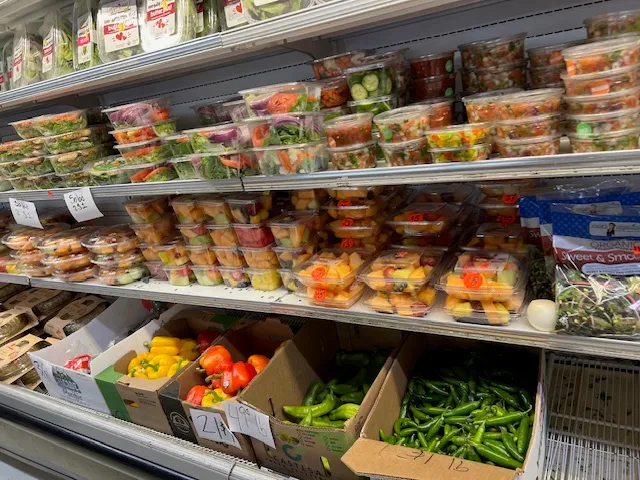Table of Contents
Bridging the Gap Between Supply and Market
Introduction
Across the world, small farmers—often located in remote regions—struggle to connect with large-scale buyers like wholesalers, supermarkets, and food processors. Without direct access to consumers, these farmers are often forced to sell at unfair prices to small grocery stores and convenience shops, limiting their ability to grow financially.
FoodPulse.net is working to change this narrative by connecting small farmers with local and traveling consumers, restaurants, and food businesses using real-time geographical information on produce availability. This could revolutionize the way small farmers reach customers, ensuring fair compensation and reducing food waste.
The Reality of Small Farming: By the Numbers
Most people assume that farming is either large-scale commercial agriculture or small family-run operations selling at farmers' markets. The truth is, the majority of farms worldwide are small, struggling to make ends meet.
Key Statistics on Small Farming
| Factor | United States | Global Small Farming Trends |
|---|---|---|
| Definition of Small Farm | Earns less than $250,000 annually (USDA) | 84% of farms worldwide are under 2 hectares |
| Percentage of Total Farms | 91% of U.S. farms are considered small | Small farms produce 35% of the world’s food |
| Access to Direct Consumers | Limited to farmers' markets, CSA programs, and small groceries | Often rely on middlemen who take a large cut |
| Wholesale Market Control | 85% of crops in the U.S. are sold through large-scale commodity farming | Supermarkets and wholesalers dictate prices |
| Food Waste | 30-40% of all U.S. food is wasted | Small farmers often discard produce due to lack of buyers |
| Biggest Challenge | Lack of access to steady wholesale and restaurant buyers | Low profits and market instability |
These statistics paint a harsh reality—small farmers contribute significantly to global food production but are largely ignored by institutional buyers who prioritize bulk, low-cost sourcing from industrial farms.
The Struggle: Why Small Farmers Can’t Compete
1. Limited Access to Wholesale Markets
Large supermarket chains and wholesalers prefer to work with large-scale farms that can guarantee consistent quality, high volume, and low prices. Small farmers, who produce seasonal, diverse crops in limited quantities, are seen as unreliable suppliers.
2. The Middleman Problem
With no access to wholesalers, small farmers often rely on middlemen (small grocery stores, brokers, and distributors). These middlemen:
- Undervalue produce by offering prices well below market rates.
- Prioritize bulk purchases, making it hard for small farms to compete.
- Create unstable market conditions, forcing farmers to sell at a loss.
3. Financial Limitations and Infrastructure Challenges
Most small farms operate on tight budgets and lack access to essential infrastructure such as:
- Cold storage facilities to extend shelf life.
- Transportation networks to move produce to urban markets.
- Processing plants to turn surplus crops into value-added products like sauces, jams, or frozen foods.
Without these resources, small farmers are forced to sell quickly at low prices, often leading to financial struggles.
The Direct-to-Consumer Model: A Tough Balancing Act
Many small farmers prefer to sell directly to consumers through:
- Farmers' markets
- CSA (Community Supported Agriculture) boxes
- Farm stands
While this model allows them to set their own prices and tell their farm story, it has major challenges:
- Limited customer base – Unlike supermarkets, small farms can't reach thousands of customers at once.
- Seasonal limitations – Certain crops can only be sold during specific months, leading to unstable income.
- Labor-intensive sales – Setting up and managing farmers' markets or CSA programs takes significant time and effort.
Thus, while direct sales maximize profits per unit, they do not provide the large-scale stability needed for long-term success.
A Possible Solution: Connecting Small Farmers to Businesses & Travelers
How FoodPulse.net is Changing the Game
FoodPulse.net is working to give small farmers a real-time, location-based platform to connect with:
- Traveling consumers looking for fresh, local food.
- Restaurants and food processors seeking fresh ingredients.
- Wholesale buyers willing to work directly with small farms.
Key Benefits of This Model
- Eliminates Middlemen – Farmers can sell directly to buyers, ensuring better prices and fair compensation.
- Real-Time Updates – Buyers receive instant alerts on available produce and locations.
- Diversified Customer Base – Instead of relying on one major buyer, farmers can reach multiple local consumers and businesses.
- Encourages Farm Tourism – Travelers can discover local farm stands through the platform, boosting agritourism.
This approach could be the future of sustainable small farming, allowing growers to expand their markets without sacrificing profit margins.
The Future: How Small Farmers Can Survive & Thrive
For small farmers to compete in a market dominated by industrial agriculture, they need:
1. Direct-to-Consumer Digital Marketplaces
Apps like FoodPulse.net can bridge the gap between small farmers and consumers, allowing farmers to sell directly and avoid unfair pricing.
2. Investment in Value-Added Processing
Small farms need access to shared commercial kitchens and processing hubs to turn surplus produce into packaged foods, extending shelf life and increasing profitability.
3. Local and Regional Food Hubs
Food hubs can aggregate products from multiple small farms, enabling them to sell collectively to larger buyers like schools, hospitals, and grocery stores.
4. Policy Changes and Subsidies
Governments should:
- Provide incentives for supermarkets to source locally.
- Support transportation and storage solutions for small farmers.
- Offer grants for community food hubs to increase market access.
Conclusion: A More Connected Future for Small Farmers
The global food system is imbalanced, favoring large-scale industrial farms while leaving small farmers struggling for survival. By using technology and direct-to-consumer solutions, small farmers can bypass middlemen, gain fair prices, and build sustainable businesses.
FoodPulse.net is leading the way in empowering small farmers, ensuring they connect with real buyers in real-time, and pave the way for a fairer, more sustainable food system.
For small farmers, the future is not about "getting big or getting out"—it's about getting connected. 🚜🌾🍎









